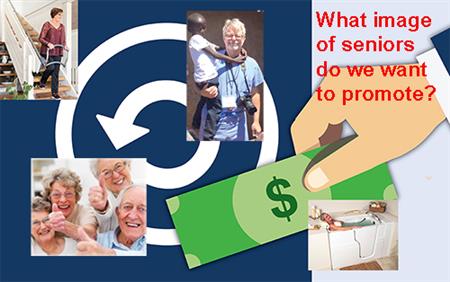May is Youth Services Month. Rotarians in every community quite justifiably put much effort and coin into providing support to its early years’ cohort. Youth Exchange programs, adventure series of various types, scholarships, food programs, literacy supports, are some of the best-known Rotary activities.
Youth is also the demographic upon which we put most of our promotional focus for new members. In that, we are much like many product marketing firms.
In the current issue of Fast Company Jeff Beer of Toronto, Canada has an article titled “Why marketing to Seniors is so Terrible”. In it, Beer provides some very good reasons why we should be marketing our memberships to this cohort just as strongly as to the 18-39 year-olds.
In his article Beer describes “oldsvertising” as “a hellscape full of reverse mortgages, erectile dysfunction pills, and bathtubs that won’t kill you.” The impression I have of Rotary’s promotional material is its almost exclusive outreach to what I will call the Rotaract demographic. That means Rotary is like brands everywhere in the USA. Only 5% of all advertising focuses on those over fifty.
I fully support our goal to recruit youth into Rotary, however, like Beer we need to ask, are we invest our promotional dollars into “the most creative, high-production campaigns … on the youngest consumers?” I do not think Rotary sees “older groups … as time-worn stereotypes (of) older people as needy and helpless.” After all, the majority of us are in the “older group”, and we do not see ourselves that way. At the same time, we need to market to the 55+ group with the same fervour as the youth market for several very valid reasons.
For example:
“Euromonitor reported that 70% of all available U.S. income is owned by those over 55, and, globally, people over 60 will account for $15 trillion in spending power by 2020.” We not only have to think of our membership numbers; we have to remember our Foundation’s market needs the resources of the “over 55” cohort.
Beer suggests some interesting strategies. He quotes Sarah Rabia who says you need to stress inclusive intergenerational strategies which stress the “values and similarities between your audience”. Either that or “laser-focused on (the seniors) audience, with a tone that’s upbeat, modern, and progressive.”
Beer also points out how The McCann study of 2018 “The Truth About Age” recommends we discard the age-based categories and focus on “attitudinal segmentation”. “So instead of age ranges, it outlined five different attitudes: Ageless Adventurers, Communal Caretakers, Actualizing Adults, Youth Chasers, and Future Fearers.” You must admit analysing our clubs under such categories might reveal a lot and explain many of the differences between clubs and their success and failure to recruit.
Beer’s conclusion should be encouraging to all of us a Rotarians and for the future of Rotary. There is one universal truth about ageing and Beer describes it best:
“The most surprising finding the McCann team discovered was when they asked people to envision an ageing utopia–and an ageing dystopia. In every single country surveyed, the utopia had generations living together in harmony, learning from each other, and helping one another other. The dystopia, conversely, strictly segregated young and old.
The vast majority of people said ageing well means spending time with people who are both younger and older than you. It’s about intergenerational connections.”
That finding should be both a caution and an opportunity as Rotary and clubs move forward in our efforts to grow our membership. It is a perspective we should emphasise in all our recruitment campaigns.
